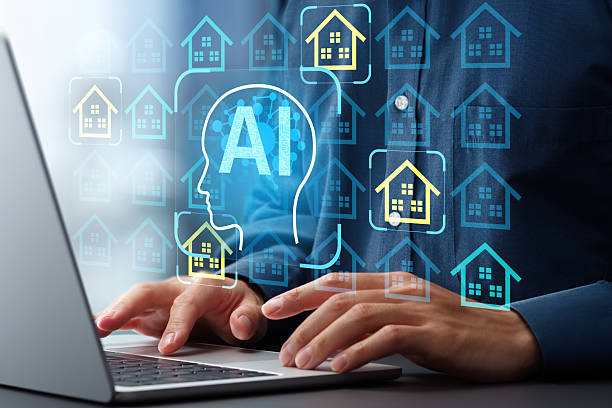How AI Can Fast-Track Affordable Housing Projects Under ED1
Los Angeles has one of the largest housing shortages in the country. Rents are high, homes are scarce, and many families struggle to find a place they can afford. To respond, Mayor Karen Bass introduced Executive Directive 1 (ED1). This directive is designed to speed up affordable housing projects by removing unnecessary delays in approvals.
Table of Contents
ToggleEven with ED1 in place, developers still face challenges. Permits, zoning checks, and design revisions often slow down progress. This is where artificial intelligence (AI) can help. AI can sort data, review documents, and even predict problems before they appear. With the right use, AI can make ED1 much more effective and get affordable homes built faster.
How AI Fast-Tracks Affordable Housing Under ED1
From site scan to groundbreaking—AI trims delays at every step.
AI ranks parcels by zoning fit, transit access, and ED1 eligibility in minutes.
Result: weeks of research → hours.
Models height, parking, and density to confirm ED1 compliance before submittal.
Result: fewer re-design cycles.
Auto-checks forms, flags missing items, and generates code-compliant notes.
Result: cleaner first submittal.
Predicts timelines, routes RFI responses, and keeps stakeholders aligned.
Result: months → weeks.
Faster approvals lead to earlier starts and more affordable homes delivered.
Result: schedule certainty.
The Main Challenges Facing Affordable Housing Projects Under ED1
ED1 cuts some red tape, but the process is still not simple. Affordable housing projects face many barriers:
Zoning checks take time – Developers must confirm their project meets the right zoning rules. Doing this by hand can take months.
Permits are slow – City agencies must review applications, reports, and designs. Each step adds delays.
Communication gaps – Agencies and consultants often work with different systems, making coordination hard.
Budget risks – Delays increase labor and material costs, putting projects at risk.
These hurdles show why policy alone cannot fix the housing shortage. Developers and city agencies need smarter tools to move projects forward.
What AI Brings to the Table in Real Estate and Development
Artificial intelligence means using computer systems to do tasks that usually need human decision-making. In housing and real estate, AI is not about replacing people. Instead, it’s about speeding up work and reducing errors.
Here are some key benefits AI can bring:
Faster processing – AI can scan thousands of pages of zoning codes or permit forms in seconds.
More accuracy – It reduces mistakes in compliance checks and document handling.
Clear predictions – AI can forecast delays, cost overruns, or design issues before they happen.
For ED1 projects, these benefits could mean fewer delays, lower costs, and more affordable homes ready on time.

Using AI to Streamline the Permitting and Entitlement Process
Permitting is one of the biggest barriers for affordable housing. Approvals often drag on for months, even under ED1. AI can help by automating and predicting key steps.
Some practical uses include:
Automatic document review – AI checks forms for missing or incorrect information.
Faster compliance checks – Project plans can be compared against zoning and ED1 rules instantly.
Timeline predictions – AI can use past data to estimate how long approvals will take.
Cities that have tested AI permitting tools report faster approvals. What once took months can now be done in weeks. If Los Angeles applies these tools widely, ED1 projects could break ground much sooner.
AI for Smarter Zoning and Land Use Analysis
Zoning rules are one of the biggest challenges for housing projects. Even under ED1, developers need to prove that their project fits city rules. This process is often slow because zoning codes are complex and full of exceptions.
AI can speed this up by:
Scanning zoning codes quickly – AI can read thousands of pages in seconds.
Finding buildable lots – It can highlight which properties meet ED1 standards.
Modeling land use – AI can predict how changes in density, parking, or height will affect a project.
Instead of spending weeks on zoning research, developers can get answers in days. This makes it easier to start projects that already qualify under ED1.
Reducing Design and Construction Delays with AI
Design changes and construction delays are common in housing projects. Small mistakes can turn into costly setbacks. AI tools can prevent this by improving planning and design.
Some examples include:
AI-powered design software – Quickly generates floor plans and 3D models that follow building codes.
Cost estimation tools – Predict the cost of materials and labor before construction begins.
Risk detection – AI can point out design flaws or safety issues early in the process.
By catching problems before they happen, AI helps keep projects on time and on budget. This is especially important for affordable housing, where money is tight.
Improving Collaboration Between Stakeholders with AI Platforms
Affordable housing projects involve many players—developers, architects, city agencies, and consultants. Miscommunication between them often leads to delays. AI platforms can bring everyone onto the same page.
AI project management tools track tasks and deadlines in real time.
Shared platforms make it easier to exchange documents and updates.
Smart reporting gives agencies quick access to compliance and progress reports.
When stakeholders use the same AI-driven system, it reduces confusion and builds trust. For ED1 projects, this collaboration means faster approvals and smoother construction.
AI Impact on ED1 Projects
Key metrics showing how AI can speed approvals, cut errors, and improve delivery.
Automated checks and cleaner submittals reduce back-and-forth.
AI compares drawings to ED1 & zoning rules before submission.
Predictive pricing + early clash detection protect contingency.
Shared AI dashboards align agencies, designers, and owners.
Case Studies: Where AI is Already Making a Difference
AI in housing is not just theory—it is already in use in many places.
San Francisco tested AI tools to help process permit applications. Early results showed faster reviews and fewer errors.
New York City used AI to scan zoning maps and identify sites for affordable housing. This saved planners months of research time.
Singapore has long used AI for urban planning, helping the city maximize land use and predict traffic impacts.
These examples show that AI can make housing projects faster and more efficient. Los Angeles can learn from these cases and apply similar tools to ED1 projects.
The Limits and Risks of Relying on AI in Housing Development
AI is powerful, but it is not a magic fix. There are limits to what it can do in housing projects.
Data accuracy – If the data fed into AI is outdated or wrong, the results will also be flawed.
Bias concerns – AI can unintentionally favor certain outcomes if the system is not carefully designed.
Adoption challenges – City agencies may not have the budget or staff training to use new AI tools right away.
Need for human oversight – AI can highlight issues, but people still need to make final decisions.
These risks mean AI should be seen as a tool, not a replacement for expert judgment. Developers and city planners must combine technology with human experience.
The Future of AI and Affordable Housing Under ED1
AI use in real estate and housing is still growing, but the future looks promising. Cities are starting to see how AI can support fast-track housing policies like ED1.
Some possible future uses include:
Predictive urban planning – AI could forecast housing needs years in advance, helping cities plan smarter.
Automated compliance systems – Developers may submit projects and get instant feedback on whether they meet ED1 rules.
Better resource management – AI could help optimize energy, water, and material use in affordable housing projects.
If adopted widely, these tools could reshape how cities build and approve affordable housing.

Conclusion: AI as a Key Partner in Delivering Affordable Housing Faster
ED1 is an important step toward solving Los Angeles’ housing crisis, but it cannot succeed alone. Developers and city agencies still face delays and budget risks that slow down affordable housing projects.
AI offers a way to bridge this gap. By automating approvals, scanning zoning codes, predicting delays, and improving teamwork, AI can make ED1 more effective. The goal is not to replace people but to give them better tools.
With AI as a partner, Los Angeles can deliver affordable housing faster, at lower cost, and with fewer delays. For residents, that means more homes available sooner—and a stronger path toward housing stability.
Ready to move your affordable housing project forward under ED1? Partner with JDJ Consulting Group to streamline approvals, reduce delays, and make your project a success. Call us today at (818) 793-5058 to get expert guidance on zoning, permits, and development strategies in Los Angeles.
How AI Fast-Tracks Affordable Housing Under ED1
Key ways AI helps speed up approvals, reduce delays, and support ED1 projects.
Parcel & Zoning Analysis
AI ranks sites by zoning, transit access, and ED1 eligibility in minutes.
Automated Permit Prep
Checks forms, flags missing info, and ensures ED1 compliance.
Timeline Prediction
Forecasts review times, routes RFIs, and reduces approval delays.
Design & Construction
Generates compliant floor plans, estimates costs, and flags risks.
Smart Coordination
Dashboards align developers, designers, and agencies in real time.
Key Benefits
~45% faster reviews, 60% fewer errors, 25% lower budget risks.
Ready to streamline your ED1 project? Talk to JDJ Consulting today.
FAQs: AI Can Fast-Track Affordable Housing Projects
What is ED1 in Los Angeles?
ED1, or Executive Directive 1, is a housing policy introduced by Mayor Karen Bass in December 2022. It was designed to cut red tape and speed up the approval of affordable and supportive housing projects across Los Angeles. Under ED1, qualifying projects get priority reviews and reduced delays, making it easier for developers to bring affordable housing to market faster.
How can AI fast-track affordable housing projects under ED1?
AI can fast-track affordable housing projects by automating time-consuming tasks like permit reviews and zoning checks. It can also predict delays, flag compliance issues, and streamline communication between agencies. By reducing bottlenecks, AI makes ED1 even more effective in delivering housing units quickly.
Why are affordable housing projects often delayed?
Delays in affordable housing projects usually come from long permitting processes, complicated zoning rules, and poor coordination between stakeholders. Rising material and labor costs also add pressure when timelines are extended. These factors make projects more expensive and harder to complete on time.
Can AI help with zoning analysis in Los Angeles?
Yes, AI can scan complex zoning codes, land use maps, and property data to identify which sites qualify for ED1 projects. This process, which normally takes weeks of manual review, can be completed in hours with AI. Developers get faster answers and can move ahead with confidence.
How does AI improve the permitting process?
AI improves permitting by reviewing documents automatically and spotting errors before submission. It can also compare project plans against ED1 requirements to ensure compliance. Some systems even predict how long a permit will take, helping developers plan better.
Can AI reduce construction delays in affordable housing projects?
AI can reduce delays by using predictive models to forecast material shortages, labor gaps, or cost spikes. It also helps architects and engineers spot design flaws early, before they become expensive problems. This allows projects to stay closer to budget and timeline.
Is AI already being used in housing development?
Yes, several cities have already adopted AI tools in housing development. San Francisco uses AI to help with permit processing, New York has tested AI for zoning analysis, and Singapore applies AI for urban planning and infrastructure. These examples show the technology’s real-world value.
What are the risks of using AI in housing development?
The risks of AI include relying on inaccurate or biased data, which can lead to flawed results. Some public agencies may also struggle with funding or training to adopt AI systems. That’s why AI should support, not replace, human experts in housing development.
How does AI improve collaboration on ED1 projects?
AI platforms allow developers, consultants, and city officials to share project updates in one place. Automatic alerts and reports keep everyone informed of progress and compliance needs. This reduces delays caused by miscommunication and helps projects move forward smoothly.
Will AI replace people in housing development?
No, AI will not replace people in housing development. It is a support tool that handles repetitive tasks like data review, compliance checks, and scheduling. Human expertise is still essential for decision-making, design, and community engagement.
How can AI help make housing more affordable?
AI helps lower costs by cutting delays and reducing errors in planning and construction. Faster approvals and smarter resource management mean less money wasted on hold-ups. These savings can be redirected toward keeping housing prices affordable.
What is the future of AI in affordable housing under ED1?
The future of AI in housing includes predictive urban planning, where cities can forecast demand years ahead. Developers may also benefit from instant compliance tools that approve projects within days instead of months. As adoption grows, AI will become a standard part of building faster, smarter, and more affordable housing.
Error: Contact form not found.






